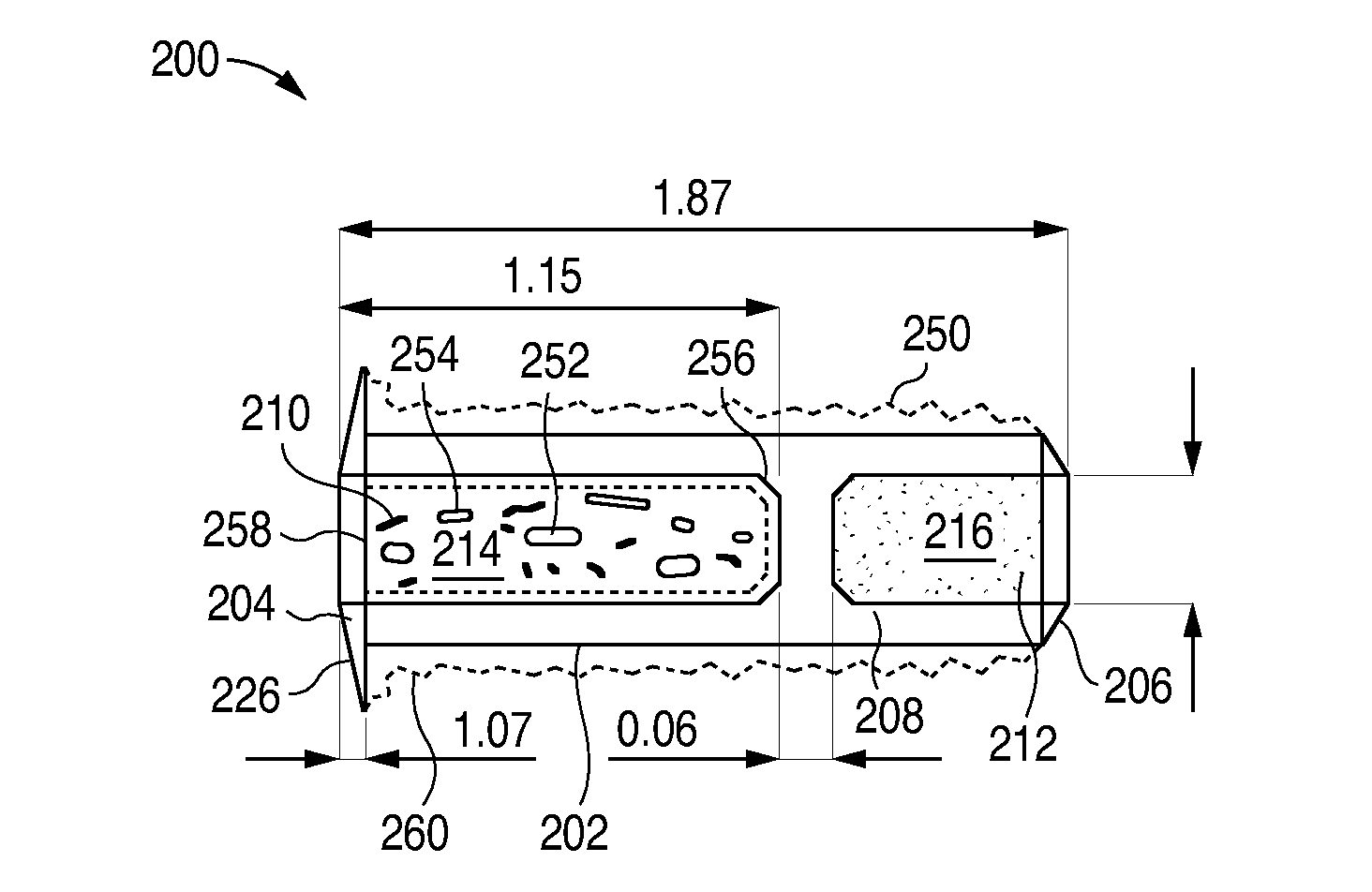Sustained release delivery of one or more agents
a technology of one or more agents and sustenance release, applied in the field of ocular implants, can solve the problems of affecting the efficacy of the therapies available, reducing vision and many times blindness, and patients may not follow the directed treatment regim
- Summary
- Abstract
- Description
- Claims
- Application Information
AI Technical Summary
Benefits of technology
Problems solved by technology
Method used
Image
Examples
example 1
[0308]An open-label, Phase 2 study of a Latanoprost Punctal Plug Delivery System (L-PPDS) lacrimal implant containing a drug core comprising 44 micrograms latanoprost is conducted in subjects with Ocular Hypertension (OH) or Open-Angle Glaucoma (OAG). After an appropriate washout period from previous treatment (or no washout if treatment naïve), approximately 40 subjects are fitted with the L-PPDS and followed for safety and efficacy for 12 weeks.
[0309]After treatment with the L-PPDS, subjects are given Xalatan® (latanoprost ophthalmic solution, 0.005%) for a 4 week run-out period to confirm a response to topical prostaglandin treatment.
Introduction:
[0310]The L-PPDS formulation in this Example includes 44 μl is of latanoprost and uses a proprietary, punctal plug design that has been designed to have improved retention characteristics. This is an open-label study to gather preliminary safety and efficacy data on the 44 μg strength L-PPDS composed of the new punctal plug design.
[0311]...
example 2
[0319]An open-label, randomized, parallel-group study is conducted in approximately 40 subjects with ocular hypertension (OH) or open angle glaucoma (OAG). After an appropriate washout period from previous treatment (no washout if treatment naïve), subjects are enrolled and randomized (1:1) to study treatment with either a 44 microgram Latanoprost Punctal Plug Delivery System (L-PPDS) or a 44 microgram Latanoprost Punctal Plug Delivery System plus Artificial Tears containing Benzalkonium Chloride (L-PPDS+AT-BAK). Subjects are followed for 6 weeks to monitor safety and efficacy.
[0320]After treatment with the L-PPDS, subjects are given Xalatan® (latanoprost ophthalmic solution, 0.005%) for a 4 week run-out period in order to confirm a response to topical prostaglandin treatment.
Introduction:
[0321]The L-PPDS formulation in this example includes 44 μg of latanoprost and uses a proprietary, punctal plug design that has been designed to have improved retention characteristics. This is an ...
example 3
[0331]A partially masked study is conducted in approximately 10 evaluable subjects with ocular hypertension (OH) or open angle glaucoma (OAG). After an appropriate washout period from previous treatment (or no washout if treatment naïve), subjects are fitted in both eyes with Latanoprost Punctal Plug Delivery System (L-PPDS) in both the upper and lower puncta. In each subject, the right eye receives a total latanoprost dose of 44 μg (L-PPDS with latanoprost dose of 44 μg in lower punctum and punctal plug with no drug core in the upper punctum), and the left eye receives a total latanoprost dose of 65 μg (L-PPDS with latanoprost dose of 44 μg in lower punctum and L-PPDS with latanoprost dose of 21 μg in upper punctum). Subjects are followed for safety and IOP response for 6 weeks.
[0332]L-PPDS and punctal plugs with no drug core are not replaced during the study. Subjects remain on study as long as L-PPDS and / or punctal plugs are retained in both upper and lower puncta of one eye. Aft...
PUM
| Property | Measurement | Unit |
|---|---|---|
| Fraction | aaaaa | aaaaa |
| Time | aaaaa | aaaaa |
| Time | aaaaa | aaaaa |
Abstract
Description
Claims
Application Information
 Login to View More
Login to View More - R&D
- Intellectual Property
- Life Sciences
- Materials
- Tech Scout
- Unparalleled Data Quality
- Higher Quality Content
- 60% Fewer Hallucinations
Browse by: Latest US Patents, China's latest patents, Technical Efficacy Thesaurus, Application Domain, Technology Topic, Popular Technical Reports.
© 2025 PatSnap. All rights reserved.Legal|Privacy policy|Modern Slavery Act Transparency Statement|Sitemap|About US| Contact US: help@patsnap.com



